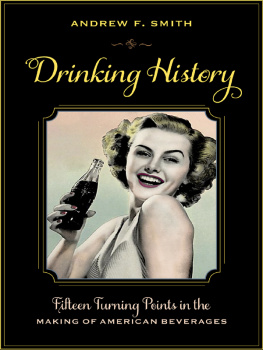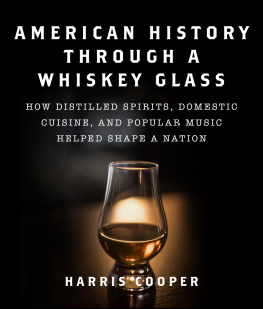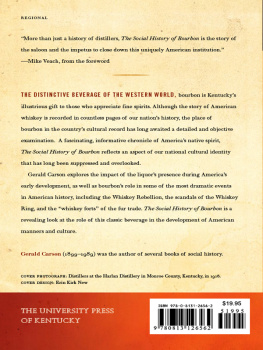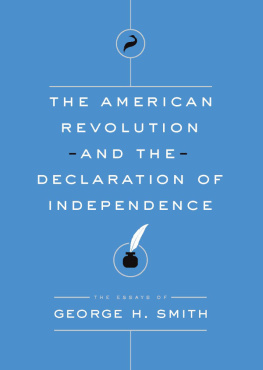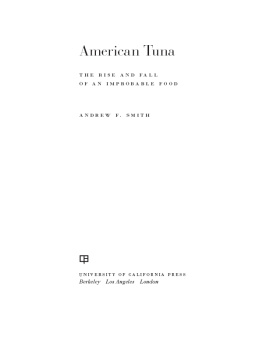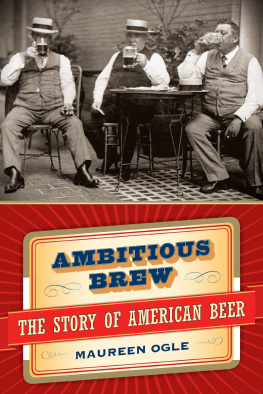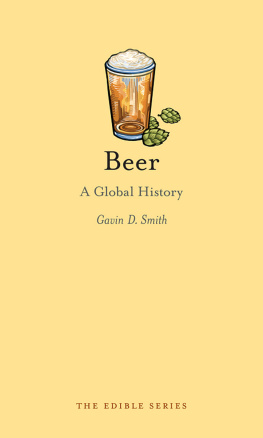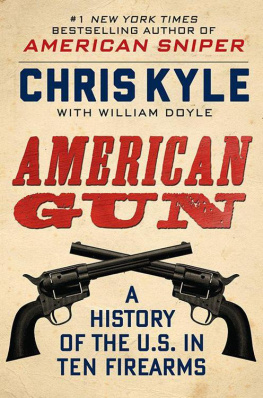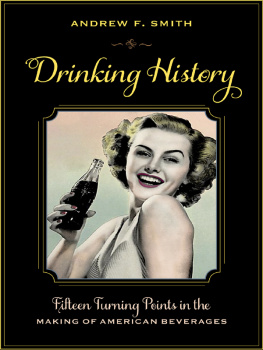Drinking History
Arts and Traditions of the Table
PERSPECTIVES ON CULINARY HISTORY
ANDREW F. SMITH
Drinking History
Fifteen Turning Points in the
MAKING OF AMERICAN BEVERAGES
COLUMBIA UNIVERSITY PRESS / NEW YORK
Columbia University Press
Publishers Since 1893
New York Chichester, West Sussex
cup.columbia.edu
Copyright 2013 Andrew F. Smith
All rights reserved
E-ISBN 978-0-231-53099-6
Library of Congress Cataloging-in-Publication Data
Smith, Andrew F., 1946
Drinking history : fifteen turning points in the making of American beverages / Andrew F. Smith.
p. cm.(Arts and traditions of the table)
Includes bibliographical references and index.
ISBN 978-0-231-15116-0 (cloth : alk. paper)
ISBN 978-0-231-53099-6 (e-book)
1. BeveragesUnited StatesHistory. I. Title.
TP527.S65 2013
641.2dc23
2012010134
A Columbia University Press E-book.
CUP would be pleased to hear about your reading experience with this e-book at .
Cover image: Courtesy of The Advertising Archives / Cover design: Lisa Hamm
References to Internet Web sites (URLs) were accurate at the time of writing. Neither the author nor Columbia University Press is responsible for URLs that may have expired or changed since the manuscript was prepared.
Contents
H UMANKINDS most basic physical need is water, which for most Americans is readily available and cheap. However, not content to just replenish our bodies with plain water, we have devised ingenious ways to flavor and process it into all sorts of palatable drinks, which are sometimes nutritious and health enhancing but other times not. We have added natural and artificial substancesbark, leaves, seeds, spices, beans, nuts, honey, herbs, fruit, flowers, grasses, grains, sugars, vitamins, minerals, and all sorts of chemicalsto water and processed it in ingenious ways, creating a great cornucopia of beverages that are alcoholic and nonalcoholic, carbonated and caffeinated, heated and room temperature, cool and frozen, watery and thick, spicy and plain.
I am particularly intrigued by the wild assortment of beverages Americans drink. Today alone, the total number of domestic and imported beers, wines, spirits, coffees, teas, sodas, bottled waters, sports drinks, energy drinks, and dairy drinks consumed in America surely run into the tens of thousands. These beverages are sold in several formsbottled, boxed, canned, frozen, powderedand sipped, sniffed, savored, guzzled, quaffed, or chugged from glasses, mugs, cups, bottles, cartons, or straight from a tap or fountain. They can be bought in all sorts of placessupermarkets, convenience stores, vending machines, bars, lounges, fast food chains, restaurants, saloons, cafes, cafeterias, ordered online, and even made in the home.
As a culinary historian, I am curious about how Americans created this diverse and complex beverage scene and why beverages have shifted over time. American beverage history is complex, and numerous books and articles have been written about particular drinks; even more have been written about major historical events, such as the Revolutionary War, the Whiskey Rebellion, and Prohibition, in which particular beverages played key roles. It would be impossible to condense a complete discussion of American beverage history into a single book.
For the past few years, I have grappled with two related questions: Why do Americans drink the beverages that we do? And how can the evolution of American beverages be presented in the most understandable fashion? My answer has been to focus on fifteen events or turning points that introduce threads of American beverage history. Thirteen of these events focus on beverage categories that often intersect, and two focus on historical periodscolonial beverages and the temperance and prohibition movements, which have affected American beverages for 400 years. American drinking habits are embedded in broader societal trends, such as those related to industrialization, transportation systems, internal migrations, external immigrations, political reform efforts, advertising and promotion, scientific discoveries and new technologies, governmental regulation and taxation, corporate centralization, and globalization. The relationships between American beverages and these broader trends are significant, but I touch upon them only tangentially in this book.
This book introduces American beverage historyits significant events, creators, celebrities, promoters, and controversies. It is also introduces the vast literature on American beverage history. In this work, I have tried to present the entire history of American beverages, both alcoholic and nonalcoholic, simply because of the tremendous interconnections among them. An increase in sales of one beverage usually results in a decrease in sales of other beverages. Focusing just on one beverage or a beverage category often fails to illuminate these connections.
My approach is mainly explanatory and descriptive rather than normative. Although this is primarily a book about Americas past, it is also about how we think about beverages today. For those who believe that American beverages are on the right track, this book offers a partial history of how we arrived at a system that has emphasized convenience, massive diversity, corporate concentration, and consumer choice. For those interested in changing the current system, this book offers insight into how we ended up where we are todayand perhaps even provides inspiration for alternative approaches for the future.
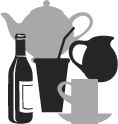
I WOULD LIKE TO THANK Linda Civitello, Janet Clark, Lynne Olver, and Barry Popik for uncovering significant sources; Frank Clark for his comments on early versions of the colonial chapter; Alice Ross for her comments on beverages consumed by American Indians; Mark Pendergrast for his comments on coffee and soda; Erika Janik for her comments on cider; Peter LaFrance for his comments on beer; Joseph Carlin for his comments on cocktails; Ian Williams for his interview and comments on rum and tequila; Tyler Colman for his comments on wine; Alissa Hamilton for her interview and comments on orange juice; Kevin Kosar for his comments on whiskey and distilled spirits; Elizabeth Rojak for her comments on bottled water; Clarissa Dillon for her information about gin in colonial America; and Anne Mendelson for her comments and reviews of the milk chapter. I would also like to thank those on the 19th Century Foodways, SavoryFare 2, and Association for the Study of Food and Society listservs who responded to my queries.
I warmly thank Charles Roebuck, Bonnie Slotnick, and Tatiana Kling, who read, edited, and commented on the manuscript, and my agent, Giles Anderson, for his comments on the book proposal and constant encouragement.

